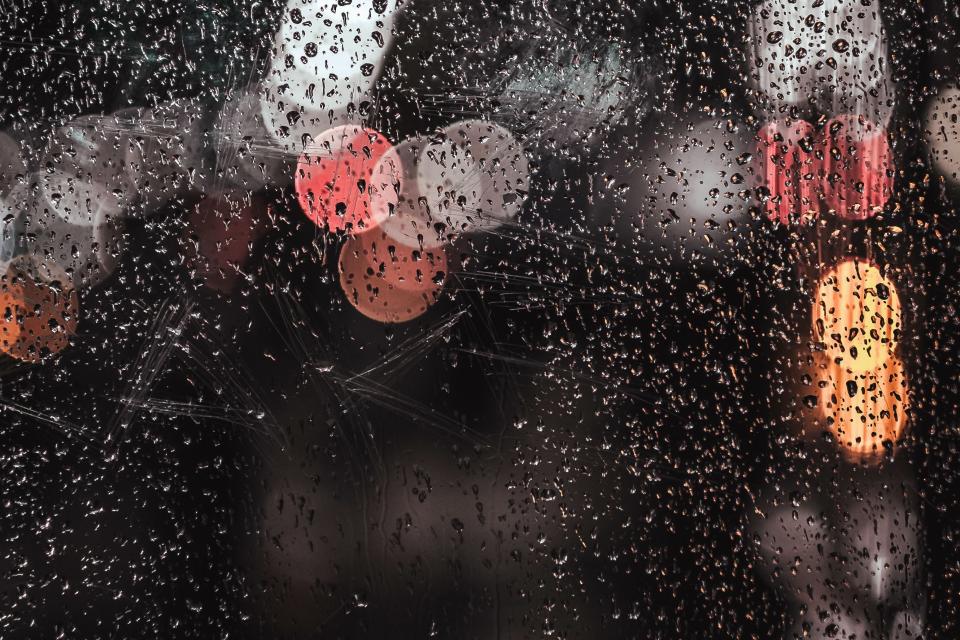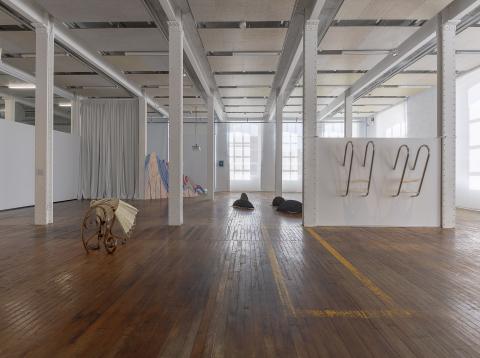If It Rains Like This, Let It Pour!
Against all odds, we begin spring with the announcement of rain, lots of rain. This is how we picture the art that is emerging; like fresh, unpredictable, fertile water, vital for maintaining the life cycle of any ecosystem. This exhibition is our own particular rain gauge, bringing together the 10 finalists of the Miquel Casablancas Award 2023 call for proposals together with the 3 projects developed during 2022 through the SAC-FiC residencies. The formats and research processes presented reflect a diverse ecosystem —performance, installation, sculpture, video and drawing — but all of them share a desire to spill into the space of the rooms as if reclaiming the place they occupy in the territory of artistic production. They are, in fact, concerned not only with the issue of working in times of liquid modernity but also with how bodies cope when navigating through or in between these waters. Against all odds, this rain allows alternative ways of thinking to be irrigated in the face of the droughts of recent times.
On the first floor, we dive into an invitation from Irati Inoriza to cross the surface of the water like a rite of passage in which the act of diving beneath is just the immediate prelude to a renewed emergence. The practice of ablution has accompanied us since ancient times as a metaphor for change and transition. With the installation Cuando emerges (2023), the artist’s intention is to reflect this moment of transition, this moment in between. Just as the other artists in the exhibition reflect this moment of navigating through these waters: in between emerging and achieving the status of consolidated artist.
Elisa Pardo also recreates a water landscape in Los delfines y el mar (2022). Her piece is the reconstruction of a natural space that makes the materiality with which it has been constructed visible (plastic bags, cotton, wadding, etc.), in the same way that we construct and idealise our memories. The maritime landscape of Baja California unfolds in the room through various elements that allude to both the waves and the dolphins that jump from them and swim through the space, a formal overflow of the artwork that suggests the subjective overflow of the artist herself in her act of recollection.
Mercedes Pimiento’s artwork Es un cuerpo (2022) also refers to a landscape. In this case, the Canal de la Infanta, which was built in 1820 to channel the water of the Llobregat river and would ultimately become an open-air sewer as it passed through L’Hospitalet de Llobregat. Her work process involved in-depth research on the material and social history of the canal, its relationship with the city and its tunnelling process. All this takes shape as a large sculpture that encourages reflection on the infrastructures that traverse our lives and shape our territory.
More bodies dive into the room on the first floor, such as the IFBB sculptures by Marta van Tartwijk (2020), which recreate the movement of a dancing body, freezing different moments in a manner akin to the chronophotographic experiments of the late 19th century or Giacomo Balla’s dog of 1912. At the same time, the pieces reconfigure a new corporeality through juxtapositions of each of these fragments of time. They do so through structures of iron, fabric and latex, conjuring up an imaginary that broaches the pairings of pleasure-pain, union-fragmentation and body-industry.
The sculptures that form Open me, Close me (2022) by Mónica Mays also play with juxtapositions. This project is based on a study of the patterns of Manila shawls from a distorted perspective of their cultural identity. A necessarily hybrid and porous cultural identity, which could only come about through the centuries-long transoceanic trade between European countries and their respective colonies. The motifs represented by each of the patterns are reproduced through two different juxtaposed drawings, from the right and the left angles, which makes it impossible to see the pattern objectively, in turn making it impossible to see the pattern in its entirety.
Through another landscape, the one created by Blanca Gracia in Tabú (2016), we dive into a theatrical arrangement via two mountains that lead us to the screening of an animation in three acts. It shows a diverse ecosystem governed by magical thinking, animist societies and natural elements whose movements are activated by their own moods, disguises or faces clouded by filaments of wings. The gradual invasion of this territory invented under the guise of “terra nullius” alters the balance of this ecosystem, causing the landscape and those who inhabit it to disappear.
While on the first floor the exhibition underlines the subject of the elements through sculptures and installations, the second floor focuses on projects that directly address body politics and work issues in the cultural and artistic sector, questioning the rhetoric of output in the current system of production. This is the case of Work(in’) work(out) by Biel Llinàs, one of the SAC-FiC artists-in-residence in 2022. The piece addresses the boundaries between artistic practice and bread-and-butter jobs from the artist’s viewpoint of exhibition room attendant and educator at La Pedrera.
This is also the case of the project fracasar estrepitosamente, the diary written between 2018 and 2024 by txe roimeser, which unfolds in the room in the form of 412 pieces of paper on the wall and invites us to experience the flow of the tentacles of failure from a transfeminist and trans identity perspective, starting from the idea that “failing is something that queers do and have always done exceptionally well” (Halberstam, J., 2011). The artist’s reflection raises the paradox that the possibility of facing failure — or of putting oneself out in the open — can be considered a form of privilege.
In the same room, with TWORK, Joana Capella defends the muscular memories of feminised human and non-human bodies — bodies, soil, machines and crops — that work immersed in the agri-logistic productivist paradigm. She does this through a series of actions developed during her SAC-FiC residency in 2022, which she has compiled in various formats, as well as through another action that will be programmed at the same time as the exhibition. Her research challenges us about unproductive bodily practices and others that respond to the contemporary logic of output.
Also, as part of the 2022 SAC-FiC artists in residence programme, Ana Ayuso will reconstruct her workspace in the exhibition room (Artistas trabajando, 2022-2024), spending her time researching the difficulties of registering artistic practice in the production system and the fact that many artists are unable to dedicate themselves fully to their creative work. The installation will be activated by the presence of the artist herself on Fridays during the working hours of her current bread-and-butter job.
Similarly, the politics of the body and the precariousness of productive or unproductive relations pervade David y yo, marzo 2008. 0:02:20 (2023), which is the screening of a paused video that shows and at the same time does not show a kiss that we can only conjecture and the memory of an affectionate encounter, that of David and Alexander at the age of 17. An affectionate long-distance relationship that is documented through cameras, which become an extension of the body and accompany them in their respective solitude.
Julia Martos’s piece Si un árbol se cae (2022), addresses the collective imaginary and memories embodied through storytelling. In the video, the artist gives desire an image: the desire to bring to life an uncertain landscape that is constructed through the stories of ancestors. The project delves into the role of the mediation of images and artistic representations when shaping our desires.
Finally, the installation Siempre ha estado ahí by Sofía Montenegro (2022), forms a sound and light landscape of 13 nights on the Biscay coast, travelling through the twilight, revealing the beings that inhabit it from sunset to sunrise. The lights are synchronised with the sound through a programming technique, slowly mutating, almost imperceptibly. The work aims to transform the perception of what is observed while listening and to produce a fictitious sensation of the environment that allows us to imagine the complexity of any ecosystem.
Diana Padrón
Work: Alexander Arilla Velázquez, Blanca Gracia, Irati Inoriza, Julia Martos, Mónica Mays, Sofía Montenegro, Elisa Pardo Puch, Mercedes Pimiento, txe roimeser, Marta van Tartwijk
SAC-FiC Residents: Ana Ayuso Nogueiras, Joana Capella Buendia, Biel Llinàs
Project files: Joana Capella Buendia, Andrea González Garrán, Rita González Soler + Ricardo Pérez-Hita, Huaqian Zhang
Dossiers Graphic communication: Josep Lozano Añón, Expanded Matter Studio (Elena Águila + Ana Olmedo), Parte Studio (Estela Ibarz + Berta Mir)
Sant Andreu Contemporani (SAC) has the support of Barcelona City Council - Sant Andreu District.
![]()
![]()
![]()




